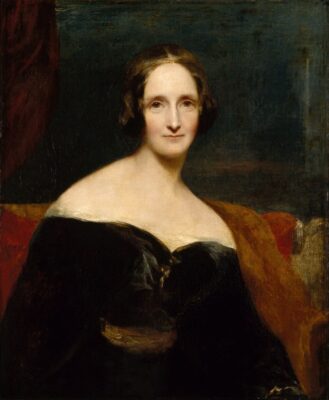 Few stories from the early 19th century continue to haunt our imaginations the way Frankenstein does. Published in 1818 by Mary Shelley—when she was just 20 years old—the novel blends Gothic atmosphere, philosophical depth, and early science fiction in a way that feels eerily relevant today. It’s a tale about ambition, responsibility, loneliness, and what it means to be human… all wrapped in a narrative that has influenced generations of storytelling.
Few stories from the early 19th century continue to haunt our imaginations the way Frankenstein does. Published in 1818 by Mary Shelley—when she was just 20 years old—the novel blends Gothic atmosphere, philosophical depth, and early science fiction in a way that feels eerily relevant today. It’s a tale about ambition, responsibility, loneliness, and what it means to be human… all wrapped in a narrative that has influenced generations of storytelling.
A Story Born From Storms and Imagination
The origin of Frankenstein is almost as famous as the book itself. During a rainy Swiss summer at Lake Geneva, Shelley and her companions—including Lord Byron and Percy Bysshe Shelley—challenged each other to write ghost stories. What followed was the creation of one of literature’s most enduring myths: Victor Frankenstein, a young scientist who assembles life from the dead, only to recoil in horror at what he has made.
Shelley wasn’t merely crafting a horror story; she was exploring the limits of scientific ambition and the consequences of abandoning one’s moral responsibility. Her themes feel even more relevant in a world navigating AI ethics, genetic engineering, and the blurred lines between human and machine.
Why Frankenstein Still Matters Today
At its core, Shelley’s novel asks questions we’re still asking:
What responsibilities do creators have toward their creations?
What happens when empathy is withheld?
How far should science push the boundaries of nature?
Modern technology often feels like Shelley’s tale brought to life—self-driving cars, lab-grown organs, robotics, and artificial intelligence all echo Victor’s desire to “pioneer a new way.” Shelley’s cautionary insights remind us that innovation without compassion can lead to devastation.
Frankenstein in Modern Culture
It’s impossible to talk about Frankenstein without acknowledging its massive cultural footprint. Though many people picture the green-skinned, bolt-neck creature from Universal’s 1931 film, that version is just one interpretation of Shelley’s more articulate, thoughtful being.
Today, Shelley’s influence can be traced across countless mediums:
-
Movies and TV: From The Bride of Frankenstein to Young Frankenstein, Penny Dreadful, The Munsters, and even Pixar’s Frankenweenie—the Creature continues to evolve with every generation.
-
Science Fiction: Shelley is often credited as a founding voice of the sci-fi genre, paving the way for works that probe the ethics of creation such as Blade Runner, Ex Machina, and Black Mirror.
-
Pop Culture: The Creature appears in Halloween décor, memes, comic books, video games (Castlevania, The Witcher), and even music—Alice Cooper, The Misfits, and countless metal and punk bands reference the story.
-
Language: The term “Frankenstein” has entered everyday vocabulary, often used (sometimes incorrectly!) to describe runaway creations or technology gone awry.
A Novel About Loneliness and Humanity
One of the most striking aspects of Shelley’s book—often lost in pop culture reinterpretations—is how deeply emotional the Creature is. He longs not for destruction but for connection, belonging, and kindness. His pain stems not from monstrous nature but from repeated rejection.
This emotional core is what keeps the novel timeless. Readers recognize in the Creature’s journey the universal desire to be seen and understood. Shelley forces us to reflect on who the real “monster” is—and whether cruelty is created or born.
The Enduring Power of Shelley’s Vision
More than 200 years later, Frankenstein continues to spark conversations about science, morality, and the human heart. It challenges us to confront our blind spots and understand the consequences that echo from our choices. Whether encountered through the original text or its many adaptations, the novel remains a masterwork of imagination and insight.
Mary Shelley didn’t just write a scary story; she created a cultural cornerstone. Frankenstein lives on—not just in laboratories and darkened theaters—but wherever questions about creation, responsibility, and empathy arise.
Shop our collection of art prints featuring quotes from Mary Shelley’s Frankenstein.
